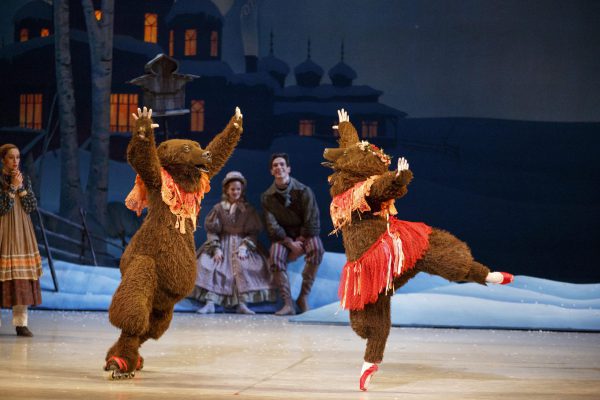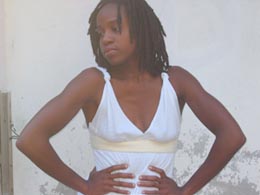In Persian culture, the character of Saghi is a beloved wine-bearer who embodies ideals and beliefs of the tradition that created him in much the same way as the stories of Krishna inform the East Indian cultural landscape.
Teacher and performer Sashar Zarif, who trained in classical dance forms in the Republic of Azerbaijan before re-locating to Toronto in the nineties, has been working with the Saghi character for several years. The latest incarnation of this multi-faceted work in progress was “Meeting with Saghi”, presented over two nights at the Betty Oliphant Theatre.
The evening consisted of the eponymous forty-minute work and a brief encore encounter between dancer Zarif and musician Pirouz Yousefian. Laurel MacDonald also worked on the show as a sound designer. Performance installations and costume displays in other parts of the theatre complex expanded on the traditions and history of Azerbaijiani dance and culture. For me, it was a stirring and stimulating introduction to an unfamiliar yet seductive world. Like most ancient dance traditions, the dances of Azerbaijian exude power, honed as they are by generations of practitioners, each contributing their own skills and personal history to a contemporary essence.
The main work begins with a simple lighting pattern that suggests a carpet in one corner of the stage. Zarif quietly greets the three, elaborately costumed female dancers who enter. Giggling, they begin to slowly shed the many brocaded and gilded layers as Zarif collects the rich cast-offs and piles them in a glittering heap on the carpet. Clothes seem representative here of the layers of personality and the cast puts them on and takes them off to signal changes in mood or persona. Thus, when Zarif dons a black coat, it indicates the advent of more assertive movement; he smiles and begins to whirl, with authority.
Zarif’s whirling is a thing to behold. The dancer extends one palm upwards (towards God) and one to the head in the tradition of the Sufi dervishes, who whirl or spin, sometimes for hours on end, in a trance-like dance of devotion. Zarif’s whirling is rock-steady and sure, with occasional variations in the position of hands and head, and big smiles. It’s exhilarating in terms of its duration; it feels like he can go on indefinitely. While this new bold movement signals a major transition of some kind, it’s unclear (to me anyway, as one who is unfamiliar with this particular legend and culture), whether he has become a new character in the unfolding saga or is showing aspects of the characters from the Saghi legend in a new light. While I enjoyed the aesthetics and the virtuosities of the evening, I felt a bit frustrated by not being able to completely understand the narratives. I suppose it’s my problem with a lot of dance however, so I won’t go on and on about it here. And to be fair, Zarif did provide explanatory notes in his program, to wit: “Meeting with Saghi is both a process of construction, in the sense that it seeks to create a classical Persian dance repertoire where one has not previously been established (or that has not survived), as well as a process of reconstruction, in that it employs many important and relevant elements of cultural context (such as the Time Arts Trio: classical Persian music, poetry and dance; and common expressions of Persian body language) to extrapolate intuitively and attempt to ‘re-create’ a semblance of a lost style of dance”.
Exhausted by his labours perhaps, Zarif curls up on the pile of garments and the women take centre stage. The ensemble dancing by the women (Keiko Kitano, Esther Chabot and Natalie King) is stately and dignified. At times it reminded me of certain classical Chinese dances with slowly undulating and recoiling arm and head positions and confined, precise steps. One of the dancers (Keiko Kitano) leaves the pack eventually and joins Zarif on his carpet home. A domestic narrative seems to unfold with Zarif and Kitano sitting together, happy and contented. Then, with sinuous arms and elegant fingers, Kitano appears to leave Zarif, mocking him gently as she goes. The brightly coloured, discarded clothes are tossed in the air and the carpet is replaced by a lighting pattern of delicate paisley shapes. It’s an elegant and charming end to a mysterious yet sporadically gripping dance work that probably has greater meaning for those with a Persian heritage but is not entirely inaccessible to those of us who enter this world in complete ignorance.
Thinking perhaps of this sector of his audience, Zarif came up with two value-added elements to the main concert. The first is a kind of on-stage coda to “Meeting with Saghi”. Pirouz Yousefian, who also composed the score for the show, joins Zarif onstage for an improvised jam. While Yousefian plays a traditional keyboard called a Santour, Zarif whirls Dervish-style in a brief and joyous nightcap. To further educate and enlighten his many fans, Zarif also turned the Creation Gallery studio in the bowels of the Betty Oliphant Theatre into an installation area showcasing Azerbaijiani traditional culture. For an hour or so following each show, a group of students performed dances and portrayed characters from Persian history amid displays of jewellery, costumes and artifacts from Zarif’s personal collection and travels in Iran and other Central Asian countries.
I find Zarif’s work intriguing: it’s a creative marriage of ancient ideas, such as the use of ecstasy as an expression of and path to divinity, with more contemporary issues of displacement and identity. The obscurity of the narratives on which the performances are suspended doesn’t really diminish the universality and richness of the material.
Tagged: Azerbaijani, Performance, ON , Toronto





